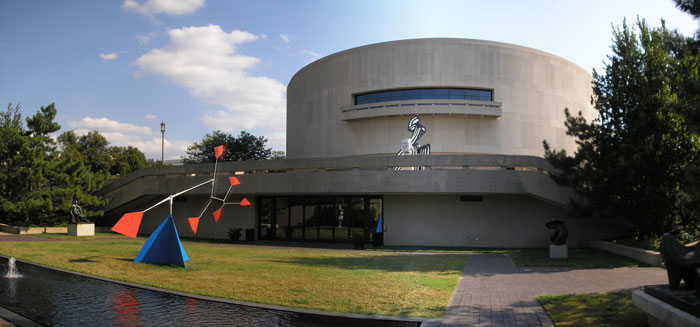-
Membership
Membership
Anyone with an interest in the history of the built environment is welcome to join the Society of Architectural Historians -
Conferences
Conferences
SAH Annual International Conferences bring members together for scholarly exchange and networking -
Publications
Publications
Through print and digital publications, SAH documents the history of the built environment and disseminates scholarship -
Programs
Programs
SAH promotes meaningful engagement with the history of the built environment through its programs -
Jobs & Opportunities
Jobs & Opportunities
SAH provides resources, fellowships, and grants to help further your career and professional life -
Support
Support
We invite you to support the educational mission of SAH by making a gift, becoming a member, or volunteering -
About
About
SAH promotes the study, interpretation, and conservation of the built environment worldwide for the benefit of all
Letter Expressing Concerns About Proposed Alterations to the Hirshhorn Museum and Sculpture Garden
Jan 15, 2021
by
SAH News

View of the sculpture garden at the Hirshhorn Museum in Washington, DC. Image courtesy of Wikimedia Commons.
On January 12, the SAH Heritage Conservation Committee sent the following letter to Carly Bond, Historic Preservation Specialist at the Smithsonian Institute, expressing concerns about the proposed alterations to the Hirshhorn Museum and Sculpture Garden in Washington, DC.
PDF Version of Letter
12 January 2021Learn more about SAH's Preservation Advocacy
Ms. Carly Bond
Historic Preservation Specialist
Smithsonian Institute
Office of Planning, Design & Construction
Architectural History and Historic Preservation
600 Maryland Avenue, SW, Suite 5001 Capital Gallery MRC 511 Washington, DC 20013Re: Proposed alterations to the Hirshhorn Museum and Sculpture Garden
Dear Ms. Bond:
The Society of Architectural Historians (SAH) expresses concerns about the proposed alterations to the Hirshhorn Museum and Sculpture Garden.
The Hirshhorn Museum and Sculpture Garden was designed by Gordon Bunshaft of Skidmore, Owings & Merrill. Joseph H. Hirshhorn’s 1966 donation of his extensive art collection to the Smithsonian set into motion a process that resulted in the opening of the new Hirshhorn Museum and Sculpture Garden in 1974. In 1981, the Sculpture Garden underwent a redesign at the hands of landscape architect Lester Collins, and the entry plaza was modified in the 1990s by Urban & Associates (now called the Office of James Urban). The Hirshhorn Museum and Sculpture Garden is currently under review for listing in the National Register of Historic Places.
The Sculpture Garden references Japanese Zen gardens, utilizing a minimalist palette of materials and landscaping. The current project includes extensive changes that we believe impact the historic integrity of this resource. Adverse effects include the expansion of the reflecting pool, and the addition of stacked stone walls that significantly alter Bunshaft’s design and erode the visual relationship between the museum and the garden.
The design and dimensions of the reflecting pool and its visual relationship with the Hirshhorn balcony is an essential part of the design. The proposed enlargement obscures this relationship. Further, during the 1981 renovation the introduction of physical walls was considered but rejected, citing negative impact upon the integrity of the sculpture garden. While stone walls are found at other locations within the National Mall Historic District, they were not part of the Hirshhorn Sculpture Garden, and precedent and palette should be drawn from the garden itself.
In addition to the expansion of the reflecting pool and the introduction of stacked stone walls, several other modifications are proposed that, together, intensify the adverse effect upon the landscape. These inappropriate alterations include site modifications to create a performance art space in the West Garden and around the reflecting pool, circulation and grade changes to the southwest corner, the introduction of a new north stair and lateral ramps, the reopening of the underground passage and historic stairs in a new configuration, and the introduction of amphitheater seating and new hardscape at the expense of existing grass throughout the site.
The Society of Architectural Historians strongly encourages careful reconsideration of these proposed alterations to the Hirshhorn Museum and Sculpture Garden.
Sincerely,
Bryan Clark Green, Ph.D., LEED AP BD+C
Chair, Society of Architectural Historians Heritage Conservation Committee
cc: Mr. Kenneth Breisch, Ph.D.; Mr. Jeffrey Cody, Ph.D.; Mr. Anthony Cohn, AIA; Mr. David Fixler, FAIA; Ms. Priya Jain, AIA; Mr. Theodore H. Prudon, Ph.D., FAIA, Ms. Pauline Saliga; Ms. Deborah Slaton; Ms. Victoria Young, Ph.D.; Members, SAH Heritage Conservation Committee.


